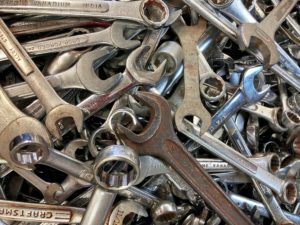 It happened. Your tenant punched a hole in the wall and now they’ve come to you with their head hanging low and wondering who needs to fix it.
It happened. Your tenant punched a hole in the wall and now they’ve come to you with their head hanging low and wondering who needs to fix it.
While this scenario may not be that common, it does raise a question that those of us in property management and real estate investing face quite frequently – who is responsible for what when it comes to property maintenance?
Step 1: Know Your State Laws
Some maintenance responsibilities are more obvious than others. Certainly if a tenant punches a hole in the wall, the tenant is responsible for fixing it. On the flip side, if something like the water heater breaks, the landlord is responsible for replacing or repairing it.
But in terms of the more run-of-the-mill maintenance responsibilities, there are definitely grey areas which need to be addressed (see step 2 below). Residential leases are quite different from commercial leases, and state law dictates much of what is required by the landlord in terms of responsibility.
In Ohio residential leasing agreements, the tenant is normally responsible for certain items, and the landlord is responsible for others. Specifically, the landlord is required to keep the unit safe, habitable, and sanitary.
This means maintaining heating and cooling systems, ensuring that clean water is available, and taking other necessary steps to keep the overall property in good shape.
Step 2: Put in the Lease
Maintenance responsibility is an important topic, and when someone comes to us with a question related to who’s responsible for what, the first thing we always ask is, “What does your lease say?”
Your lease agreement should clearly dictate who is responsible for what, especially when it comes to something that sits more on the margins.
A common example is a garbage disposal. If the garbage disposal stops working, we specify in our lease that it’s the tenant’s responsibility to clear it if there’s a clog or to use the tool under the sink to free up a jam to get it running again. If it’s a GFCI that tripped, they need to fix that too.
Conversely, if the garbage disposal has reached the end of its life and is no longer working, then it’s the landlord’s responsibility to take care of the issue.
A second scenario we frequently see is related to local clogs. If the sink clogs and water won’t drain freely, we have in our lease that it is the tenant’s responsibility to call a plumber and pay to get it fixed. We maintain this position in our lease because when we provided the property to the resident, the sink drain was clear.
However, if the main sewer line going out to the street has issues with a clog, that’s a different story. It is not something the tenant would be responsible for in most cases, and we’ll take responsibility for getting the line cleared.
When in Doubt, Ask Us
At RL Property Management Group, we prioritize taking proactive steps in order to prevent issues related to maintenance responsibility. This includes spelling everything out in our lease agreements. For more about what to include in your lease, be sure to read this.
In general, our lease agreements try to make many maintenance issues the tenant’s responsibility so long as we can legally do so while still being a good landlord. This allows us to protect the property owner and prevent them from incurring unnecessary expenses.
If you have questions about property maintenance or who should be responsible for what with your rental unit, give us a call at 614-725-3059.
